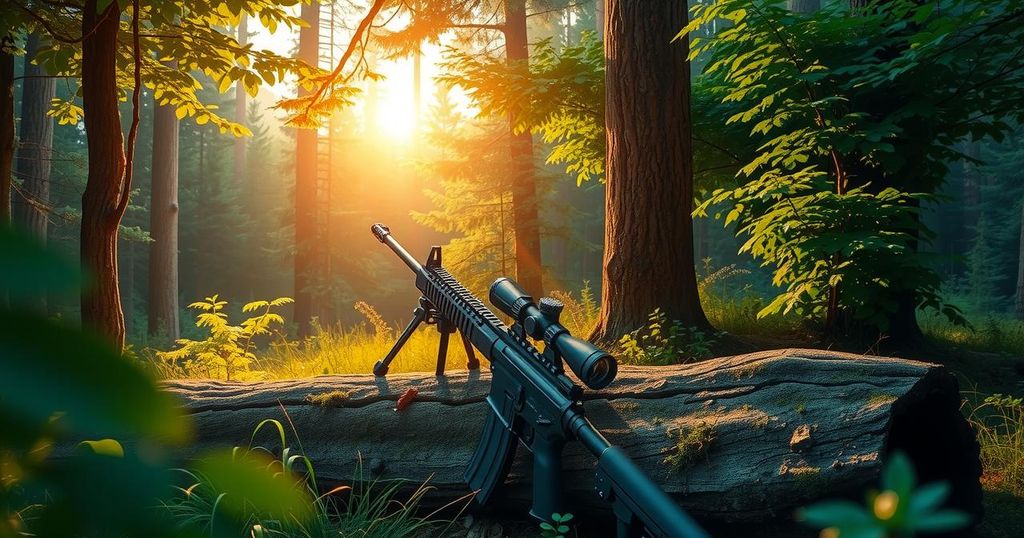The Sniper’s Nest: A Glimpse into Sudan’s Conflict Zone
The Sniper’s Nest captures a commander of the Sudanese Army observing targets across the Blue Nile, with the presidential palace in view. The image depicts the remnants of a luxury apartment now marred by conflict, showcasing the lived realities of soldiers amidst the backdrop of civil war and a military coup’s aftermath.
The Sniper’s Nest is a photograph captured by Ivor Prickett and Peter Robins, highlighting the tension in Sudan. It features the commander of a sniper team from the Sudanese Army, who targets members of the paramilitary Rapid Support Forces positioned across the Blue Nile. The scene depicted is set against the backdrop of Sudan’s presidential palace, situated on the opposing bank of the river.
The sniper’s stronghold is located within a bedroom of a once-luxurious apartment building, now a symbol of wartime despair. The walls bear the evidence of countless sniper activities, and all light bulbs have been removed to avoid detection. At present, the commander, Sgt. Maj. Ismail Hassan, is in a state of observation, with ear protectors ready for use by his side, while a bare mattress in the corner suggests the precariousness of repose amidst conflict.
This location, which was once seen as a vibrant area in an emerging democracy four years prior, now finds itself at the heart of conflict. Following a military coup and nearly two years of civil strife, the apartment block stands on the northern bank of the river, while the presidential palace, a long-time seat of power, lies across the water on the southern side. The image underscores the deep scars of war and the stark reality of living in a combat zone.
The Sniper’s Nest provides a poignant image of the ongoing conflict in Sudan, illustrating the stark transformation of a once-promising location into a frontline in warfare. With the president’s palace as a backdrop, the realities of military strife manifest through the experiences of Sgt. Maj. Ismail Hassan and his sniper team. This snapshot not only highlights the physical impacts of war but also reflects the broader implications of political disruption and civil instability.
Original Source: www.nytimes.com




Post Comment